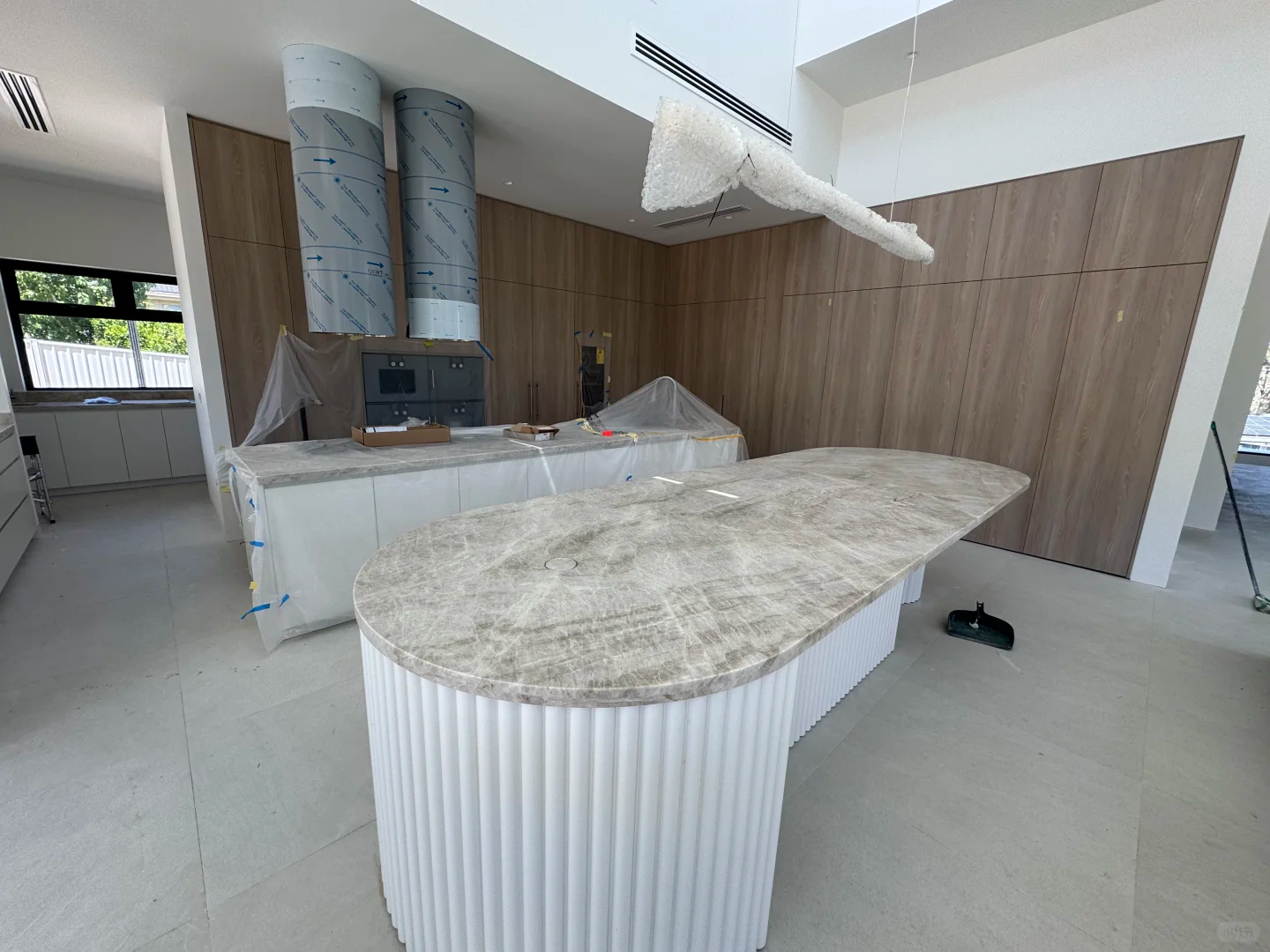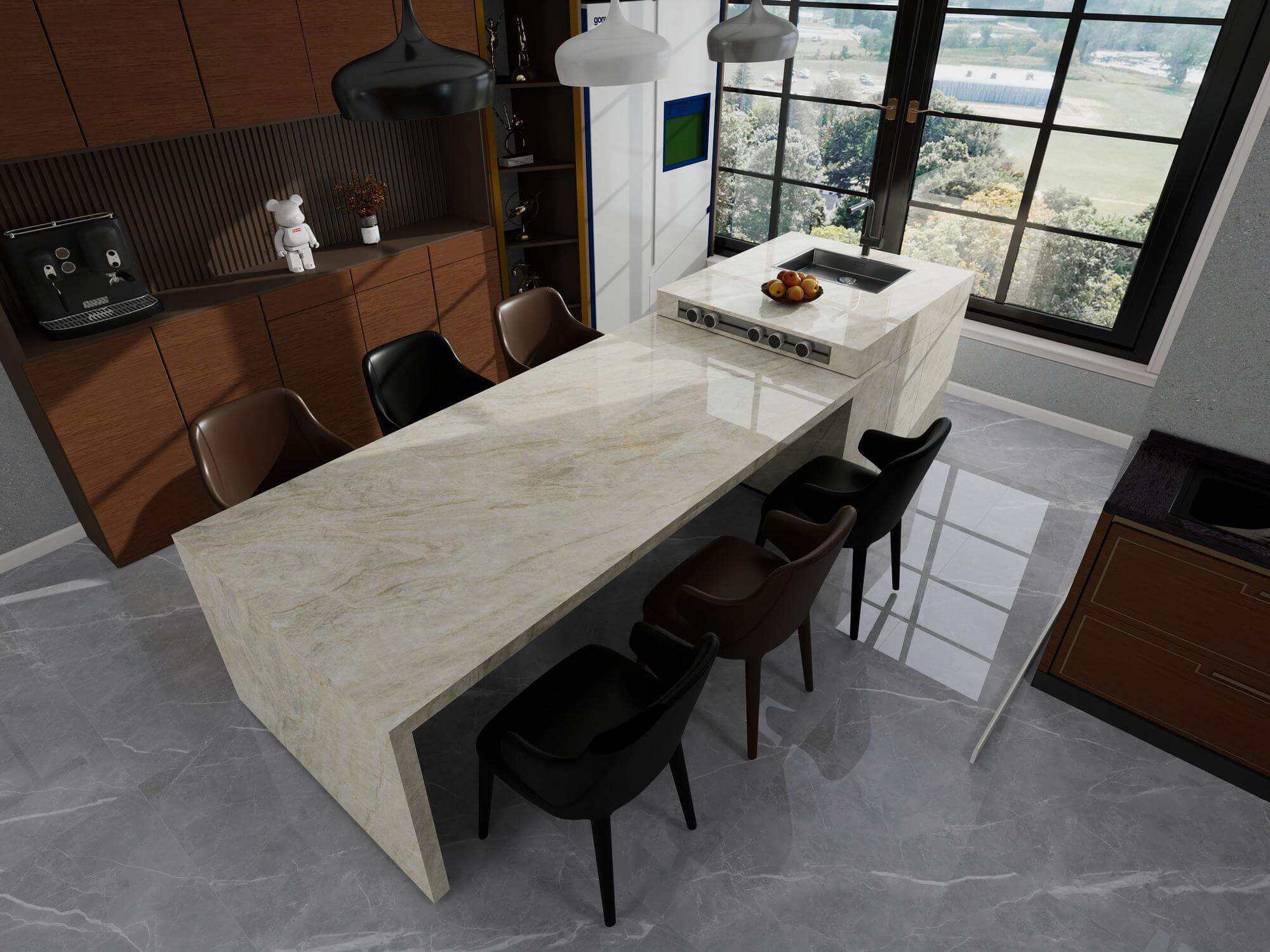A Basic Guide for Beginners: How to Choose the Perfect Quartzite Slab
Choosing a quartzite slab for your home can feel like a big decision, especially if you’re new to working with natural stone. Quartzite slab is a popular choice for countertops, backsplashes, and other home features because it combines beauty, durability, and versatility. But with so many options available—each with unique colors, patterns, and qualities—knowing where to start can be confusing. This basic guide for beginners breaks down the process step by step, helping you find the perfect quartzite slab for your space, style, and needs.
What Is a Quartzite Slab?
First, it’s important to understand what a quartzite slab is. Quartzite is a natural stone formed when sandstone is exposed to extreme heat and pressure deep underground over millions of years. This process transforms the sandstone into a hard, crystalline rock that’s resistant to scratches, heat, and stains (when properly sealed).
A quartzite slab is a large, cut piece of this stone, typically used for surfaces like kitchen countertops, bathroom vanities, or fireplace surrounds. Unlike man-made materials like quartz (which is a mix of stone chips and resin), a quartzite slab is 100% natural, meaning no two slabs are exactly alike. This uniqueness is part of its appeal, as it adds character and a one-of-a-kind look to your home.
Why Choose a Quartzite Slab?
Before diving into how to choose a quartzite slab, it’s helpful to know why it’s a great option. Here are the top reasons homeowners love quartzite slab:
- Durability: Quartzite slab is one of the hardest natural stones, with a Mohs hardness rating of 7 (only diamonds and a few other stones are harder). It resists scratches from knives, heat from hot pots, and stains from spills like coffee or oil (with sealing).
- Beauty: With its natural patterns and colors, a quartzite slab adds elegance to any space. It often looks similar to marble but with more durability, making it a favorite for high-end designs.
- Versatility: Quartzite slab works with many styles, from modern to traditional. It comes in a range of colors, from whites and grays to beiges and even bold blues or greens.
- Longevity: With proper care, a quartzite slab can last for decades, making it a long-term investment for your home.
Step 1: Decide Where to Use Your Quartzite Slab
The first step in choosing a quartzite slab is figuring out where you’ll use it. This affects the size, thickness, and finish you’ll need:
- Kitchen Countertops: For kitchens, you’ll need a durable quartzite slab that can handle daily use. A thickness of 3 cm (about 1¼ inches) is recommended for strength, especially for large islands.
- Bathroom Vanities: Bathrooms can use slightly thinner slabs (2 cm or ¾ inch) since they don’t need to support as much weight. A honed (matte) finish is popular here as it hides water spots.
- Fireplace Surrounds: Heat resistance is key for fireplaces, and quartzite slab handles high temperatures well. A polished finish can add a sleek look, while a leathered finish adds texture.
- Backsplashes: Smaller pieces of quartzite slab can be used for backsplashes, matching or complementing your countertops for a cohesive look.
Knowing the location helps narrow down your options and ensures the quartzite slab you choose is practical for its intended use.
Step 2: Understand Colors and Patterns
Quartzite slab comes in a wide range of colors and patterns, which is part of its charm. Here’s what to look for:
- Colors: Common colors include white, gray, beige, and cream. White and light gray quartzite slabs make spaces feel bright and open, while beige and cream add warmth. Some slabs have bold colors like blue, green, or pink, which work well as statement pieces (e.g., a kitchen island).
- Patterns: Patterns range from subtle to dramatic. Some slabs have fine, wispy veins, while others have thick, sweeping lines. Busy patterns hide stains and scratches better, making them good for families. Simple patterns let other elements in the room (like cabinets or decor) stand out.
When choosing, think about your existing decor. A white quartzite slab with gray veins pairs well with white cabinets for a modern look, while a beige slab with gold veins complements warm wood cabinets. Always view the full slab in person—photos can’t capture the true color and pattern variations.

Step 3: Check the Quality of the Quartzite Slab
Not all quartzite slabs are the same. To ensure you’re getting a high-quality slab, inspect it carefully:
- Cracks or Chips: Run your hand over the surface and edges. Small cracks (even hairline ones) can worsen over time, especially with heavy use. Avoid slabs with visible chips.
- Porosity: Quartzite is less porous than marble, but some slabs are more porous than others. Ask the supplier to test a small area with water—if it absorbs quickly, the slab will need more frequent sealing.
- Consistency: Look for even coloring. While natural variation is normal, drastic color changes (like a dark spot in a light slab) can be distracting. Check the entire slab, including corners, as these areas are often cut during installation.
- Origin: High-quality quartzite slabs often come from Brazil, India, or the United States. Ask the supplier about the slab’s origin—reputable sources are more likely to provide consistent quality.
Step 4: Choose the Right Finish
The finish of your quartzite slab affects both its look and maintenance needs. Here are the most common options:
- Polished: A shiny, reflective finish that brings out the stone’s colors and veining. It’s easy to clean but shows fingerprints and water spots more. Great for formal or modern spaces.
- Honed: A matte, smooth finish that reduces glare. It’s more casual and hides smudges better but is slightly more porous (needs sealing more often). Ideal for bathrooms or family kitchens.
- Leathered: A textured finish with a soft, bumpy surface. It hides scratches well and adds grip (good for preventing dishes from sliding). It’s low-maintenance but harder to clean (food can get stuck in the texture). Perfect for rustic or outdoor kitchens (covered areas).
Choose a finish that fits your lifestyle: polished for low-traffic areas, honed or leathered for busy homes.
Step 5: Consider Size and Thickness
Quartzite slabs come in standard sizes and thicknesses. Here’s what you need to know:
- Size: Most slabs are 9–10 feet long and 5–6 feet wide, but larger slabs are available for big projects like kitchen islands. If your space is larger than a single slab, the installer will join two slabs together—look for a slab with patterns that match well at the seams.
- Thickness: 2 cm (¾ inch) and 3 cm (1¼ inch) are the most common. 3 cm is sturdier and more expensive, while 2 cm is lighter and cheaper but may need plywood backing for support. For most countertops, 3 cm is worth the investment for durability.
Step 6: Set a Budget
Quartzite slab prices vary based on quality, color, and origin. On average, you’ll pay $60–$150 per square foot, including installation. Here’s how to manage costs:
- Common Colors: White, gray, and beige slabs are more affordable than rare colors like blue or green.
- Thickness: 2 cm slabs cost less than 3 cm, but remember they may need extra support.
- Local Suppliers: Buying from a local stone yard can reduce shipping costs compared to importing slabs.
While quartzite slab is an investment, its durability means it will last for years, making it cost-effective in the long run.
Step 7: Find a Reputable Supplier and Installer
Choosing the right supplier and installer is just as important as choosing the slab itself:
- Supplier: Visit local stone yards to view slabs in person. A good supplier will let you inspect slabs closely and answer questions about origin, quality, and care.
- Installer: Look for installers experienced with quartzite slab. They’ll know how to handle the stone to avoid cracks and ensure proper support. Ask for references and examples of past work.
Professional installation ensures your quartzite slab fits perfectly and lasts for decades.
Caring for Your Quartzite Slab
Once installed, simple care keeps your quartzite slab looking new:
- Seal Regularly: Seal after installation and every 6–12 months (more often for honed finishes). This prevents stains.
- Clean Daily: Wipe up spills immediately with warm, soapy water. Avoid acidic cleaners (vinegar, lemon) which can dull the finish.
- Protect from Impact: Use trivets under hot pots and cutting boards for chopping. While durable, quartzite can chip if hit with heavy objects.
FAQ
Is quartzite slab the same as quartz?
No. Quartzite slab is natural stone, while quartz is man-made (stone chips mixed with resin). Quartzite is more unique and heat-resistant; quartz is more uniform and needs less sealing.
Is quartzite slab suitable for a busy kitchen?
Yes. It’s durable enough for daily use, resists scratches better than marble, and hides stains (with sealing) better than granite.
How do I know if a quartzite slab is real?
Real quartzite is hard and scratch-resistant—try scratching it with a metal key; it shouldn’t leave a mark. Fake quartzite (often dyed marble) may scratch easily. Ask for a certificate of authenticity from the supplier.
Can quartzite slab be used outdoors?
Yes, but only in covered areas (patios, outdoor kitchens). Exposure to rain, snow, or extreme temperatures can damage it over time.
How long does a quartzite slab last?
With proper care, it can last 20–30 years or more—one of the longest-lasting countertop options available.
Table of Contents
- What Is a Quartzite Slab?
- Why Choose a Quartzite Slab?
- Step 1: Decide Where to Use Your Quartzite Slab
- Step 2: Understand Colors and Patterns
- Step 3: Check the Quality of the Quartzite Slab
- Step 4: Choose the Right Finish
- Step 5: Consider Size and Thickness
- Step 6: Set a Budget
- Step 7: Find a Reputable Supplier and Installer
- Caring for Your Quartzite Slab
- FAQ

